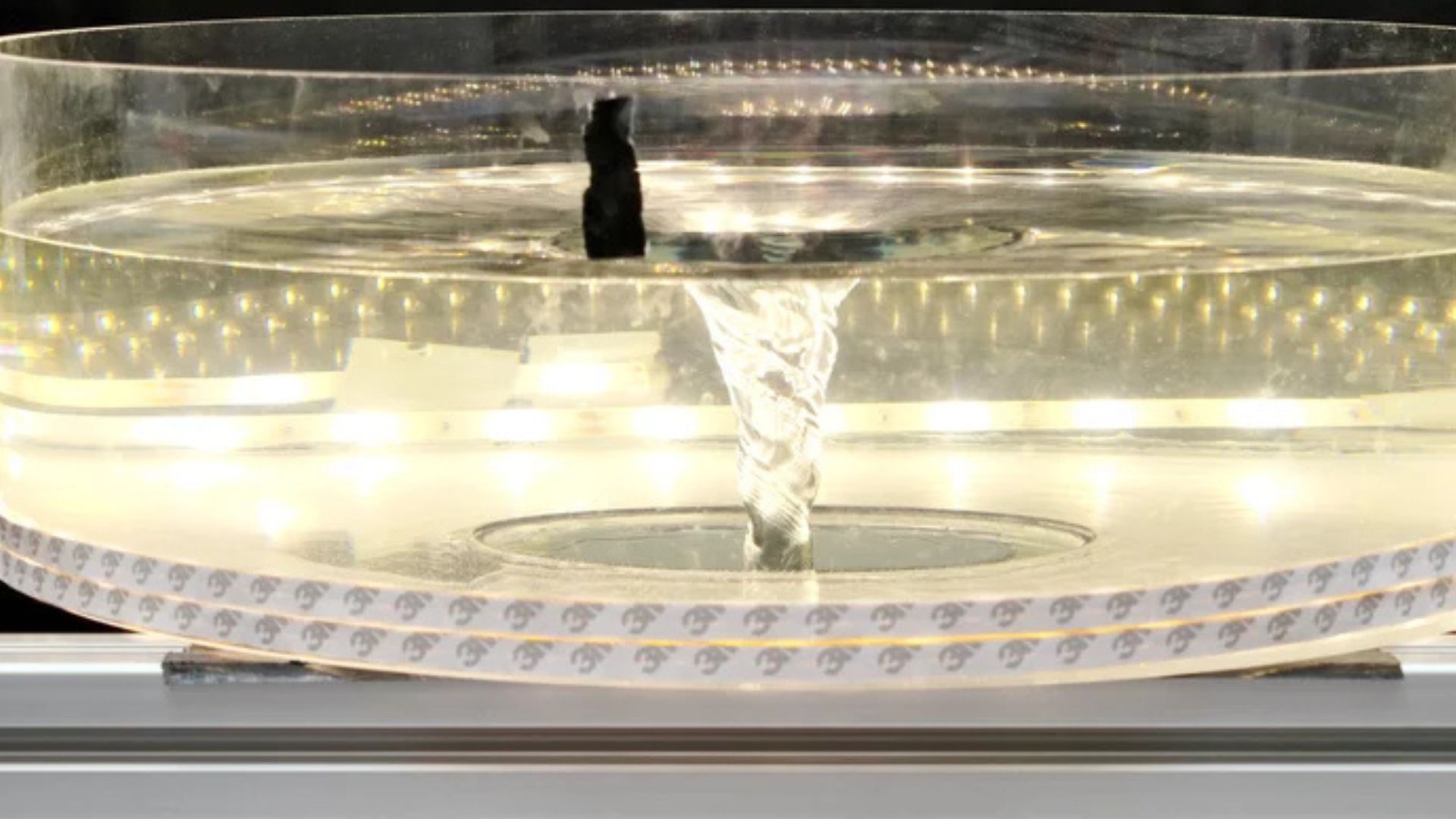Researchers have developed a simple laboratory model using a water tornado to simulate the dynamics of gas and dust in planet-forming discs.
Experts have long tried to study the swirling clouds of gas and dust that surround young stars – the nurseries where planets are born.
But observing these vast cosmic regions directly is incredibly challenging.
That’s why the University of Greifswald and the Max Planck Institute for Astronomy in Germany decided to create this simple and powerful model.
In particular, they developed an inexpensive and easy-to-construct prototype experimental setup that uses a water tornado to simulate the flow properties found in accretion discs.
Accretion disc
Accretion discs are found orbiting everything from enormous black holes to newly forming stars.
These are colossal structures where gas and dust orbit a central object, slowly spiraling inward, feeding the growing body.
Around young stars, this mix of gas and microscopic solid particles – what astronomers call dust – is the raw material for planets.
These microscopic dust particles bump into each other and combine, eventually forming objects thousands of kilometers across – the building blocks of planets.
It’s a complex ballet of orderly orbits and chaotic vortices, playing out on scales we can barely comprehend.
For a long time, understanding these processes relied on complex computer simulations. At times, simulations struggle to capture all the relevant scales and can sometimes produce misleading results. That’s where the water tornado comes in.
Previously, models could only simulate narrow, ring-shaped areas, but this new approach allows for a much wider range of distances from the center to be simulated.
“Secondly, the motions and flows closely resemble those observed in planet-forming discs and planetary systems,” explained Stefan Knauer from the University of Greifswald.
Even fundamental principles like Kepler’s laws – the rules governing planetary orbits formulated centuries ago – hold true in this simple water tornado.
The lab experiment set-up
So, how did they build this cosmic playground? It’s surprisingly low-tech.
Two transparent acrylic cylinders, one wider than the other, are stacked. At the base of the smaller cylinder, a central outlet and two nozzles pump water in opposite directions.
This simple setup, powered by a commercial aquarium pump, creates a powerful vortex, whose shape perfectly mimics a gravitational field.
Accurately mimicking a star’s gravitational pull in a protoplanetary disc was key to the experimental design.
To study the flow, researchers introduced small polypropylene beads into the vortex, which float just below the surface.
A high-speed camera tracks every move, and a computer algorithm maps out their trajectories.
While not all orbits are perfectly elliptical like Kepler’s ideal, the model accurately demonstrated the other two laws: particles speed up closer to the center, and there’s a clear relationship between their orbital period and size
This is just a prototype, but the initial results are promising.
Mario Flock, who studies planet-forming discs computationally, stated: “I am confident that, with a few modifications, we can refine the water tornado model and bring it closer to scientific application.”
The findings suggest that sufficiently small particles introduced into the laboratory vortex should behave similarly to dust grains in real cosmic environments.
This affordable and adaptable setup creates exciting new ways to study the complex interactions between dust and gas, potentially helping uncover the secrets of planet formation – and maybe even the origins of life itself.
